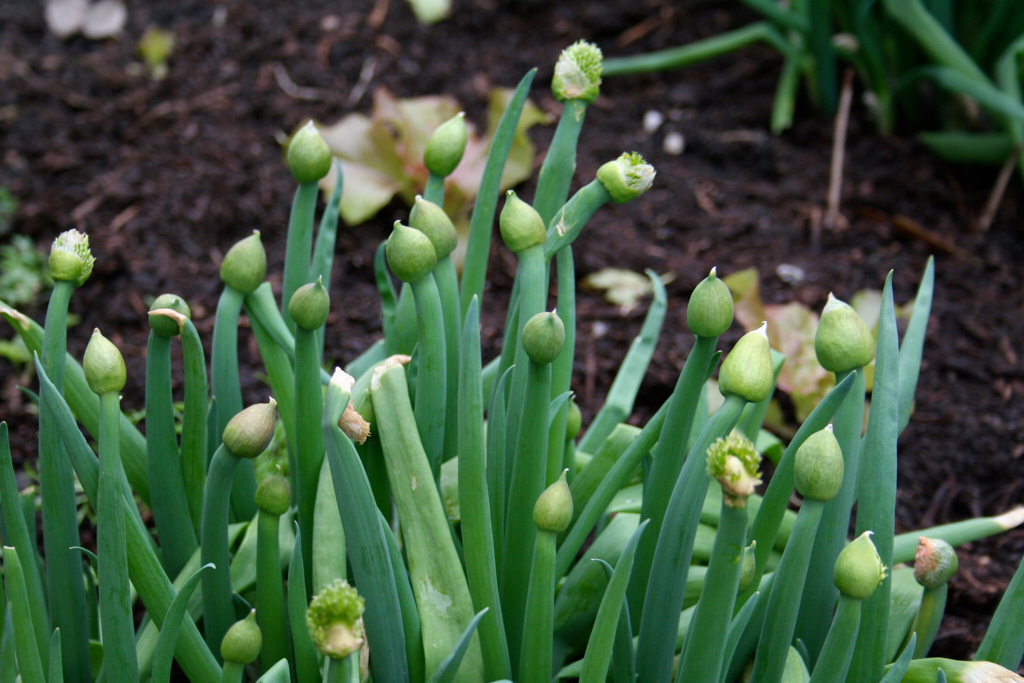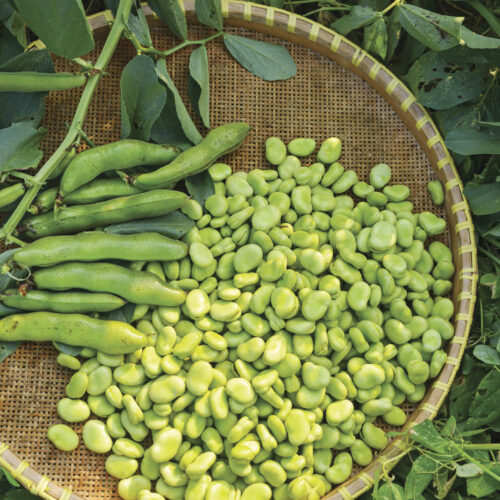Welsh onions
2020-07-21T06:33:44+10:00
Tough, versatile and useful, with a mild sweet onion flavour. Welsh onions tick all the vegie growing boxes.
Welsh onions are also known as Japanese bunching onion (Allium fistulosum). They are grown for their leaves and long slender stems, they don’t produce bulbs. They’re easily grown from seed but differ from spring onions in that they multiply and form a dense clump of stems and leaves. Winter and early spring is the perfect time to divide clumps, and spring, summer and autumn is the best time to plant seeds. Welsh onions have a mild, sweet flavour, are disease resistant and can be grown from the cold south to the tropical north. This is just a brief summary of their attributes, read on to find out more.
The common name welsh onion has nothing to do with Wales. When welsh onions were introduced to Germany in the Middle Ages, probably carried across Russia from Asia at the end of the 15th century, they were seen as foreign onions or welsch zwiebel. As they moved into other European countries and the United Kingdom, the name welsh continued to be used. Welsh onions probably originated in the Eastern Asia but are no longer known as a wild plant. They are now grown around the world, and thrive in a variety of climates, from the cold regions of Siberia to the tropical parts of Asia.
This onion has been cultivated since prehistoric times and has been the main garden onion in Chinese and Japanese culture. It is mentioned in Chinese literature as early as 100 BCE and in Japan by CE 918. Over the centuries many variants have been selected and grown, and their uses have been diverse. The array of welsh onion cultivars in Asia is probably as diverse as that of the bulb onions in Europe and America. Welsh onions have been grown in Australia since the first colonial settlers arrived, brought mostly by the first Chinese immigrants. They are used in the same way as spring onions but have the benefit of not having to be replanted each year. There are many cultivars, some of which are the result of cross breeding with A. cepa, and several of these are grown as commercial crops to produce larger bunching spring onions.
Welsh onions grow in large robust perennial clumps and have no obvious bulb but are grown for their thickened stems. In some cultivars the stems can reach 50 centimetres and are often blanched. Flower stems reach up to 80 centimetres and the leaves are usually slightly shorter. There is considerable variation in growth habit between the different varieties, cultivars and hybrids. Some forms are erect, some floppy and sprawling. Others produce many new side shoots, others only a few. Some are grown as annuals, although many are perennials and can be cultivated from side shoots.
The flowers occur in summer at the top of distinct flower stems when the short spathe splits to reveal the spherical flower head which is up to 5 centimetres in diameter and densely packed with pale yellow bell-shaped flowers. Flowers open in a regular progress from the top of the umbel to the base. These flowers are beneficial insect magnets providing pollen and nectar over a long period. Seed is best used within two years of harvest.
Propagation
The seed is simply planted about 5mm deep in good friable soil. Thin plants in stages to 20centimetres apart, and remember to eat the thinnings. Alternatively propagate new plants by dividing clumps and replanting the younger plants, from the outside of the clump, in groups of 2 or 3. This division is most successful in late winter or early spring. If the leaves are large then they will need to be cut back before replanting.
Cultivation
Welsh onions grow well in a fertile, well-drained soil in full sun. They do best in a soil with a pH between 5.5 and 7.0. Established clumps are hardy and some cultivars will survive very cold winters, especially if thickly mulched. Others may be damaged by frost but will reshoot. They do best in temperate regions and benefit from adequate water during hot dry weather. Some cultivars grow continually by producing sideshoots throughout most of the warm season. Try interplanting with other vegetables or use as an edging. Cultivars grown specifically for their white stems can take much longer to grow and may need to stay in the ground for up to twelve months.
Harvest and storage
Pick green leaves by simply cutting what is needed. New growth has the most tender leaves so the best leaves are picked in spring and summer. Stems from perennial clumps can easily be harvested by pulling the growth at the edge of the clump out sideways. Leaves and stems can be finely chopped and made into a spray that will help to control aphids and spider mites.
Culinary uses
Welsh onion leaves and stems have a mild, sweet onion flavour. They contain some vitamin C, small amounts of carotene, potassium and dietary fibre. In China and Japan the stems are commonly used in fried vegetable dishes and soups, and the leaves are used as a garnish. In Australia they are mainly used like spring onions to supply young growth for salads, stews and soups. They are particularly good in potato soup in winter when other onions are harder to get, or combined with cheese and bacon in omelettes and quiches, or just added to vegetable stirfries. Flowers are also edible. Some people on FODMAP diets are not able to eat onions and garlic, but the green leaves are better tolerated than the white bulbs. Welsh onions are a great source of mild onion flavours for those who can’t tolerate the bulbs.






